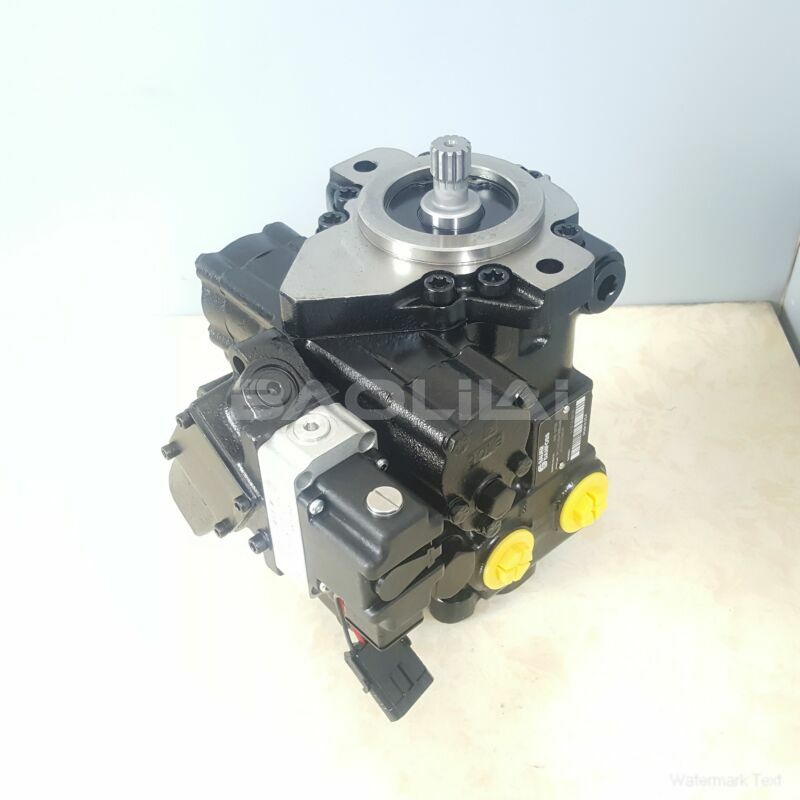BAOLILAI 4352026 Hydraulic Pump Installation and Configuration Guide
BAOLILAI 4352026 Hydraulic Pump Installation and Configuration Guide
In the hydraulic system, the correct installation and scientific configuration of the hydraulic pump are not only related to the operating efficiency of the entire system, but also directly affect its service life and failure rate. As a high-quality brand in the domestic hydraulic industry, BAOLILAI hydraulic pumps are widely used for their stability and cost-effectiveness. However, if improperly installed, even high-performance products may not be able to achieve the best results. This article will provide users with a detailed BAOLILAI hydraulic pump installation and configuration guide from four aspects: preliminary preparation, installation steps, parameter configuration and debugging suggestions.

- Preparation before installation Check product integrity
Before unpacking, please confirm that the MPV-035-D-B-A-A-R-S-F-AA-A-A-BGG-DR-A-FF-A-NNN-*** hydraulic pump model and configuration are consistent with the order, check the appearance for transportation damage, and confirm that the pump shaft, interface, etc. are not deformed or contaminated.
Clean working environment
Hydraulic pumps have extremely high requirements for cleanliness and must be installed in a dust-free and dry environment to prevent dust, water vapor or other impurities from entering the pump body and contaminating the hydraulic system.
Confirm that the installation accessories are complete
Including mounting brackets, couplings, suction and return oil pipes, sealing gaskets, bolts, hydraulic oil, etc., should be prepared in advance and matched with the pump body specifications.
System drawing confirmation
Before installation, the hydraulic system schematic diagram should be compared to verify the interface direction, inlet and outlet oil position, installation direction, etc. to ensure that it matches the whole machine system. - Standard installation steps Installation base and positioning
Install the pump body on a solid and flat bracket or base to avoid offset and vibration; it is recommended to install shock-absorbing pads to prevent resonance from affecting system stability.
Align the coupling
The coupling connecting the motor and the hydraulic pump must be concentric within the allowable range (usually no more than 0.05mm deviation) to prevent the risk of bearing wear or broken shaft during operation.
Installation of suction and return oil pipelines
The suction pipe should be as short and thick as possible with few bends to avoid negative pressure;
The pipe mouth must be higher than the minimum liquid level of the oil tank to prevent air suction;
All connections should be well sealed to prevent oil leakage and air inhalation.
Hydraulic oil filling
Select high-quality hydraulic oil according to the recommended model in the manual, clean the oil tank and pipeline system before refueling; fully exhaust before the first operation to avoid cavitation.
Installation of pressure gauge and temperature monitoring element
It is recommended to set a pressure gauge at the oil outlet and configure a temperature control switch to monitor the system operation status in real time to prevent overload and overheating.
III. Configuration and debugging recommendations Variable mechanism setting
If it is a variable pump, it is necessary to set the swash plate angle, pressure limit threshold and other parameters according to the maximum pressure and flow requirements of the system. The debugging process should be carried out slowly to avoid instantaneous impact.
Starting sequence
Check the tightness of each joint before the first start;
Run at no load for 5~10 minutes to observe whether there is abnormal noise, leakage or heating;
Then enter the low load test and gradually transition to the rated working condition.
Check system pressure and flow
Compare the set value with the actual output through the test instrument. If the deviation is large, the variable control valve or pump body setting should be readjusted.
Detect temperature rise and oil status
Continuously monitor the oil temperature (recommended ≤60℃), and regularly sample and test the color, viscosity and impurities of the hydraulic oil to ensure that the oil quality is qualified.
IV. Common installation misunderstandings and avoidance methods Misunderstanding 1: Directly connect the pump and the motor without correcting the axis → easy to damage the pump shaft
Misunderstanding 2: Ignore the return oil back pressure → cause abnormal pump load and shorten the life
Misunderstanding 3: Use unclean hydraulic oil → Rapid internal wear and shorten the maintenance cycle
Misunderstanding 4: High-frequency start-stop operation → Large thermal shock, it is recommended to add an accumulator or voltage stabilizing device
V. After-sales service and technical support BAOLILAI provides full-process technical services from installation guidance to system debugging. Users can obtain online support and video tutorials through the official website, service phone or authorized dealers. In addition, the company has training courses to help customer technicians master the practical skills of installation, maintenance and troubleshooting.
Conclusion The performance of a hydraulic pump depends not only on its own quality, but also on whether the installation and configuration are scientific and standardized. By following this guide, users can not only ensure the efficient operation of BAOLILAI hydraulic pumps in the system, but also extend the service life of the equipment and reduce the frequency of failures. In the future, BAOLILAI will continue to provide users with smarter, more convenient and more reliable hydraulic solutions to create a new era of efficient industry.
This article is published by the official website of Baolilai Hydraulics, please contact the author and indicate the source for reprinting:https://www.baolilai-pump.com/news/view-3939.html


